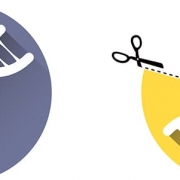How genomics is changing vaccines
The speed at which a vaccine is developed can be crucial. RNA vaccines are cheaper and faster to make, but there’s yet to be one licensed. Will this change with Covid-19?
Vaccination works by presenting a whole virus, or pieces of it, to the immune system without causing an infection. This triggers the body to produce antibodies specific to the virus so that the body is primed to act immediately if it encounters the real virus in the future.
With the Covid-19 pandemic sparking a worldwide effort to develop a working vaccine safely and at speed, many researchers are turning to a new method of triggering the body’s immune response, using strands of synthetic RNA.
Traditional vaccines
Traditional ‘biologic’ vaccines are made from inactivated (killed) viruses, or from live ‘attenuated’ viruses that have been changed so that they can’t cause infection. A third type of vaccine, known as ‘recombinant protein’, makes a single viral protein.
All these vaccine types require viruses or proteins to be grown in living cells in the lab, sometimes in chicken eggs. This is not straightforward, and refining a reliable process can take years. Even when a protein can be produced in a stable manner, it requires large, dedicated facilities.
RNA vaccines, however, offer huge potential in terms of improving manufacturing speed and capacity.
RNA vaccines
Messenger RNA (mRNA) is the molecule that carries genetic information around our cells, copying it from our DNA and acting as a template from which proteins are assembled. It is also what the genome of many viruses – including coronaviruses – are made of. When a virus invades a cell, the viral genome then uses the cell’s own machinery to build copies of itself.
An RNA vaccine takes advantage of the same process. The vaccine contains mRNA strands that act as a template for a disease-specific antigen, and this causes the body itself to make the protein that primes the immune system.
The idea for this type of vaccine has been around since the 1990s but it did not become possible to make synthetic RNA that did not trigger an unwanted immune reaction until 2008.
The appeal of mRNA vaccines is that they can be manufactured much faster and more cheaply than biologic vaccines, and in smaller, less specialised laboratories. This may be of significance if and when a vaccination for Covid-19 is rolled out, as the capacity to manufacture a biologic vaccine on a global scale does not currently exist.
A Covid-19 first?
Currently, no RNA vaccines have ever been licensed, although one for Zika is currently in clinical trials. The Covid-19 pandemic has led to increased funding for this research, however.
A number of teams are using the mRNA approach to make a vaccine against Sars-CoV-2, the virus that causes Covid-19. One of these, led by Professor Robin Shattock at Imperial College, London, was one of two UK teams to receive substantial government funding for their work to develop Covid-19 vaccines.
The team at Imperial were already working on RNA vaccines and had deliberately set up their system to be able to change quickly to a new virus at short notice. On 19 January, they made the switch to a Covid-19 vaccine and, by 13 February, it was assembled and ready to start animal testing. Phase 1 human trials began on 15 June, and the vaccine entered phase 2 trials in July. “To be in human trials already is amazing, unprecedented,” Professor Shattock told Wired.
The team’s fast action was possible in part because of the efforts of Chinese scientists, who had acted quickly in sequencing the viral genome and making it available online for other researchers to access. Existing research on Sars and Mers was instrumental in selecting a gene known to provoke an antibody response.
Four other mRNA vaccines for Covid-19 are known to be in clinical trials, and a further 20 are currently in development. It remains to be seen whether any of them will go on to become a successfully licensed vaccine to help combat the current pandemic.
–









